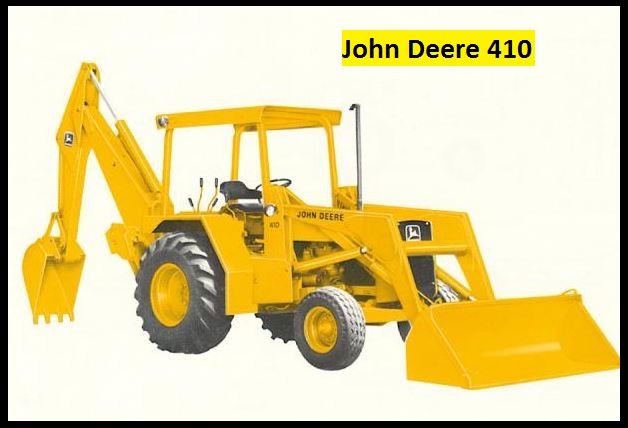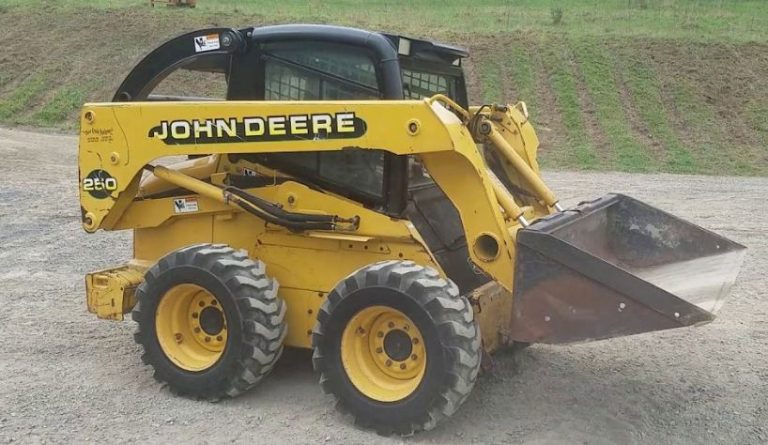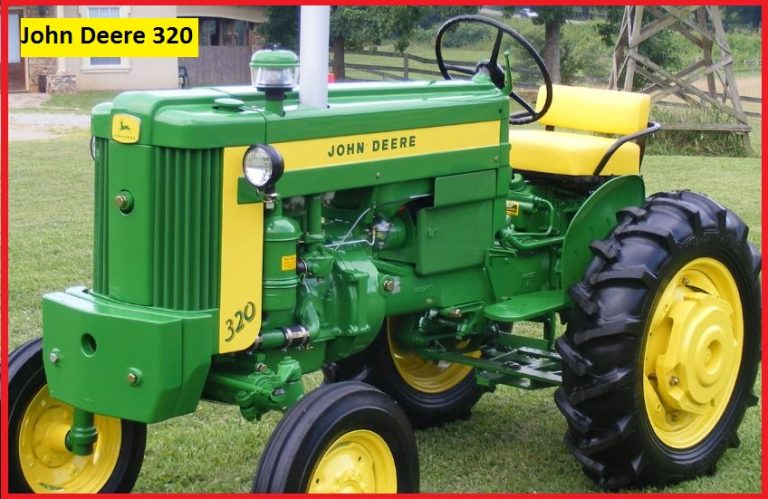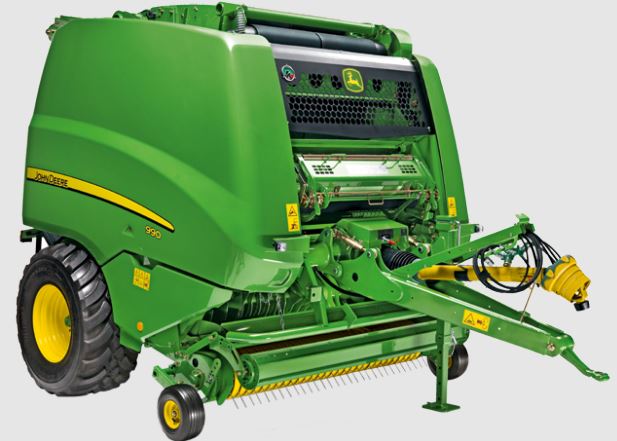Welcome, guys! I’m going to tell you about John Deere, 26G Compact Excavator in this article.
Given my assurances that all information provided is authentic and trustworthy, I sincerely hope it will assist you in purchasing this type of motorcycle.
You won’t need to visit any other websites after viewing ours. So let’s investigate.
Also, Read
- John deere 6250r price
- John deere 5075e problems
- John deere gator 835r problems
- John deere price
- John deere 350 dozer specs
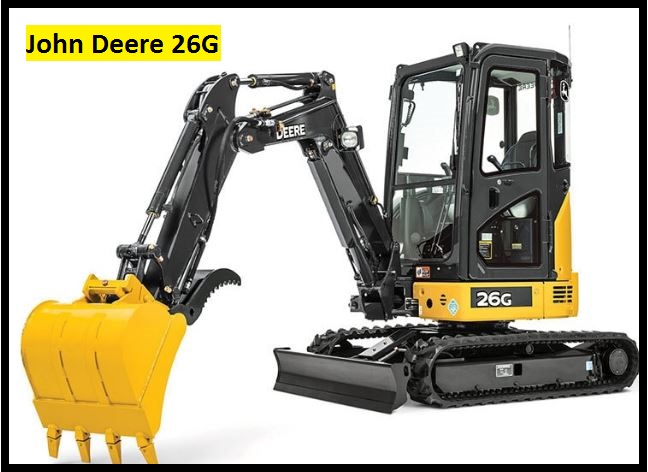
John Deere 26G Price
26G New Price: $30,500
John Deere 26G Horsepower
Horsepower: 20 HP
John Deere 26G weight
Operating weight: 2770 (6110)
John Deere 26G lifting capacity
Lifting Capacity: OVER FRONT: 2,573 LBS. OVERSIDE: 781 LBS
John Deere 26G fuel capacity
Fuel Tank, ltr (gallons (US)): 34.07 (9)
John Deere 26G Key Fact
- Engine Manufacturer: Yanmar
- Net Power: 14.9 kW (20 hp)
- Max. Digging Depth 2.59 m (8 ft. 6 in.)
- Operating Weight: 2,770 kg (6,110 lb.)
Key Features John Deere 26G
- Quickly switch out attachments using a mechanical coupling
- Boost productivity with a backfill blade that is the norm
- A larger, more accessible cab with unmatched visibility
- daily service at ground level with more frequent maintenance intervals
- Low-Maintenance Undercarriage
John Deere 26G Specs
DRIVELINE |
|
|---|---|
| Engine Manufacturer | Yanmar |
| Number Of Cylinders | 3 |
| Displacement, ltr (Inches³) | 1.267 (77) |
| Rated speed, rpm | 2500 |
| Engine Output – Net, kW (hp) | 14.9 (20) |
| Track Shoe Width, mm (inches) | 300 (12) |
DIMENSIONS |
|
| Transport Length Mono Boom, mm (ft/in) | 4180 (13 ft 9 in) |
| Transport Height – Maximum, mm (ft/in) | 2430 (8 ft ) |
| Overall Undercarriage Width, mm (ft/in) | 1500 (4 ft 11 in) |
| Track Length On Ground, mm (ft/in) | 1530 (5 ft ) |
| Overall Undercarriage Length, mm (ft/in) | 1960 (6 ft 5 in) |
| Tailswing Radius, mm (ft/in) | 800 (2 ft 7 in) |
| Ground Clearance, mm (inches) | 300 (12) |
| Dozer Blade Height, mm (inches) | 320 (12.6) |
| Dozer Blade Width, mm (ft/in) | 1500 (4 ft 11 in) |
| Width over fixed tracks, mm (ft/in) | 1500 (4 ft 11 in) |
| Track Gauge, mm (ft/in) | 1200 (3 ft 11 in) |
| Digging Reach – Mono Boom, mm (ft/in) | 4630 (15 ft 2 in) |
| Dig Height – Mono Boom, mm (ft/in) | 4280 (14 ft 1 in) |
| Dump Height – Mono Boom, mm (ft/in) | 3040 (10 ft ) |
| Dig Depth – Mono Boom, mm (ft/in) | 2590 (8 ft 6 in) |
| Standard Arm, mm (ft/in) | 1170 (3 ft 10 in) |
CAPACITIES |
|
| Fuel Tank, ltr (gallons (US)) | 34.07 (9) |
| Hydraulic Tank, ltr (gallons (US)) | 23.85 (6.3) |
| Number Of Batteries | 1 |
| Voltage, V | 12 |
PERFORMANCE |
|
| Ground Bearing Pressure, kPa (PSI) | 25.9 (3.8) |
| Swing Speed, rpm | 9.1 |
| Travel Speed – High, kph (mph) | 4.5 (2.8) |
| Arm Tearout, kN (lbf) | 15.17 (3410) |
| Bucket Breakout, kN (lbf) | 22.21 (4994) |
| Total Flow, lt/min (gallons (US) / min) | 72 (15.8) |
WEIGHTS |
|
| Operating Weight, kg (lbs) | 2770 (6110) |
John Deere 26g Attachments
Here are some additional details about each of the attachments:
- Hydraulic Hammer: Hydraulic hammers use the force of hydraulic fluid to break concrete, rock, and other hard materials. They are often used in demolition, quarrying, and construction applications.
- Auger: Augers are used to dig holes and trenches. They are available in a variety of sizes and styles, depending on the application.
- Plate Compactor: Plate compactors are used to compact soil and gravel. They are used to improve the stability of the ground and to prevent erosion.
- Grapple: Grapples are used to pick up and move bulky materials. They are often used in recycling and demolition applications.
- Thumb: Thumbs are used to grip and hold objects. They are often used in conjunction with buckets to help load and unload materials.
- Bucket: Buckets are the most common attachment for excavators. They are used for digging, loading, and carrying materials.
- Tilt Coupler: Tilt couplers allow for quick and easy attachment changes. They are becoming increasingly popular as they can save time and improve productivity.
- Quick-Tatch Attachment System: The Quick-Tatch Attachment System is a self-cleaning system that makes attachment changes fast and easy. It is a popular option for excavators as it can improve productivity and reduce downtime.
- Adaptor: Adaptors allow the attachment to be used with different machines. They are often used when the excavator is being used with a variety of attachments.
- Tool: Tools are specialized attachments for a specific task. They are often used in demolition, construction, and forestry applications.
John Deere 26g Bucket
The John Deere 26G excavator has the capability to utilize a range of specialized buckets, each crafted to excel in specific tasks. Among the most frequently employed bucket types for the 26G are:
- Standard digging bucket: This bucket exhibits remarkable versatility, proving suitable for an array of tasks including excavation, loading, and material transportation.
- Ripping bucket: Tailored for the purpose of breaking up tough terrain and concrete surfaces, this bucket is engineered to handle challenging ground conditions.
- Trenching bucket: Designed with trench excavation in mind, this bucket facilitates efficient digging of trenches for various applications.
- Scoop bucket: Engineered to effectively load and transport loose materials like sand or gravel, this bucket streamlines material handling tasks.
- Angled bucket: Crafted for digging within confined spaces or beneath obstructions, this bucket’s design enables precision excavation in challenging environments.
- Rock bucket: Specifically constructed to manage heavy materials such as rocks, this bucket enhances the excavator’s ability to handle substantial loads.
John Deere 26g Problems with Solution
Listed below are several common issues that may arise with a John Deere 26G mini excavator, accompanied by potential remedies:
- Fuel Pump Dysfunction: In case you notice the electric fuel pump operating but not effectively delivering fuel, it could stem from a problem with the pump itself or the fuel lines. Examine the fuel lines for any blockages or damage, and consider replacing the pump if required.
- Fuel Shut-Off Solenoid Problem: When the excavator cranks but fails to start, a malfunctioning fuel shut-off solenoid might be the culprit. Review all fuses and relays, and assess power and grounding at the solenoid. If power isn’t reaching it, investigate potential wiring issues.
- Battery Depletion: Should the excavator be completely unresponsive, a drained or disconnected battery could be to blame. Confirm that the battery is adequately charged and securely connected.
- Obstructed Fuel Lines: If the excavator’s performance is subpar or it won’t initiate, obstructed fuel lines might be at fault. Inspect the lines for dirt or debris, and undertake cleaning or replacement as necessary.
- Mechanical Complications: If the previously mentioned solutions prove ineffective, there could be underlying mechanical problems with the excavator. Scrutinize hydraulic components for loose bolts and refer to the operator’s manual for troubleshooting guidance. Should the need arise, seek assistance from a service technician for further support.
John Deere 26G Reviews
The John Deere 26G is a popular compact excavator known for its reliability, durability, and ease of use. It is powered by a 3-cylinder Yanmar diesel engine producing 27 horsepower. With a maximum digging depth of 11 feet and a reach of 16 feet, it is equipped with a standard backfill blade, making it versatile for tasks such as landscaping, construction, and demolition. The 26G is also a common choice for rental fleets.
For more details check out the Youtube video
Conclusion
That was all about the John Deere 26G Tractor Price, Specs, And Review, but if you have any queries regarding this Post, Then please comment Below in the Comment Box, We will solve your problem as soon as possible. Thanks for visiting our Site.
Visit our Website at Commercialvehicleinfo.com for additional Details.
John Deere 26G – FAQs
The John Deere 26G is a compact excavator designed for construction and landscaping tasks. It’s part of John Deere’s lineup of compact construction equipment.
The operating weight of the John Deere 26G typically falls within the range of [specific weight range], depending on the configuration and any added attachments.
The John Deere 26G is equipped with a [engine power] engine that provides sufficient power for various excavation tasks.
The 26G excavator has a maximum digging depth of [specific digging depth] when using the standard digging bucket.
The John Deere 26G is compatible with a range of attachments, including buckets (standard, heavy-duty, etc.), thumbs, hydraulic breakers, and more, to enhance its versatility on the job site.
The dozer blade on the 26G serves multiple purposes. It can be used for backfilling, leveling, and stabilizing the machine while performing digging operations.
Yes, the operator’s cab of the John Deere 26G is enclosed and equipped with air conditioning, providing a comfortable working environment for the operator.
The 26G excavator includes various safety features such as ROPS (Roll-Over Protective Structure), FOPS (Falling Object Protective Structure), travel alarms, and safety lockouts to ensure operator safety on the job site.
The hydraulics system in the 26G powers the excavator’s movements, including digging, lifting, and swinging. It’s operated using ergonomic controls within the operator’s cab.
Yes, the tracks of the John Deere 26G excavator are adjustable to accommodate different terrains. This feature enhances stability and maneuverability in various working conditions.

